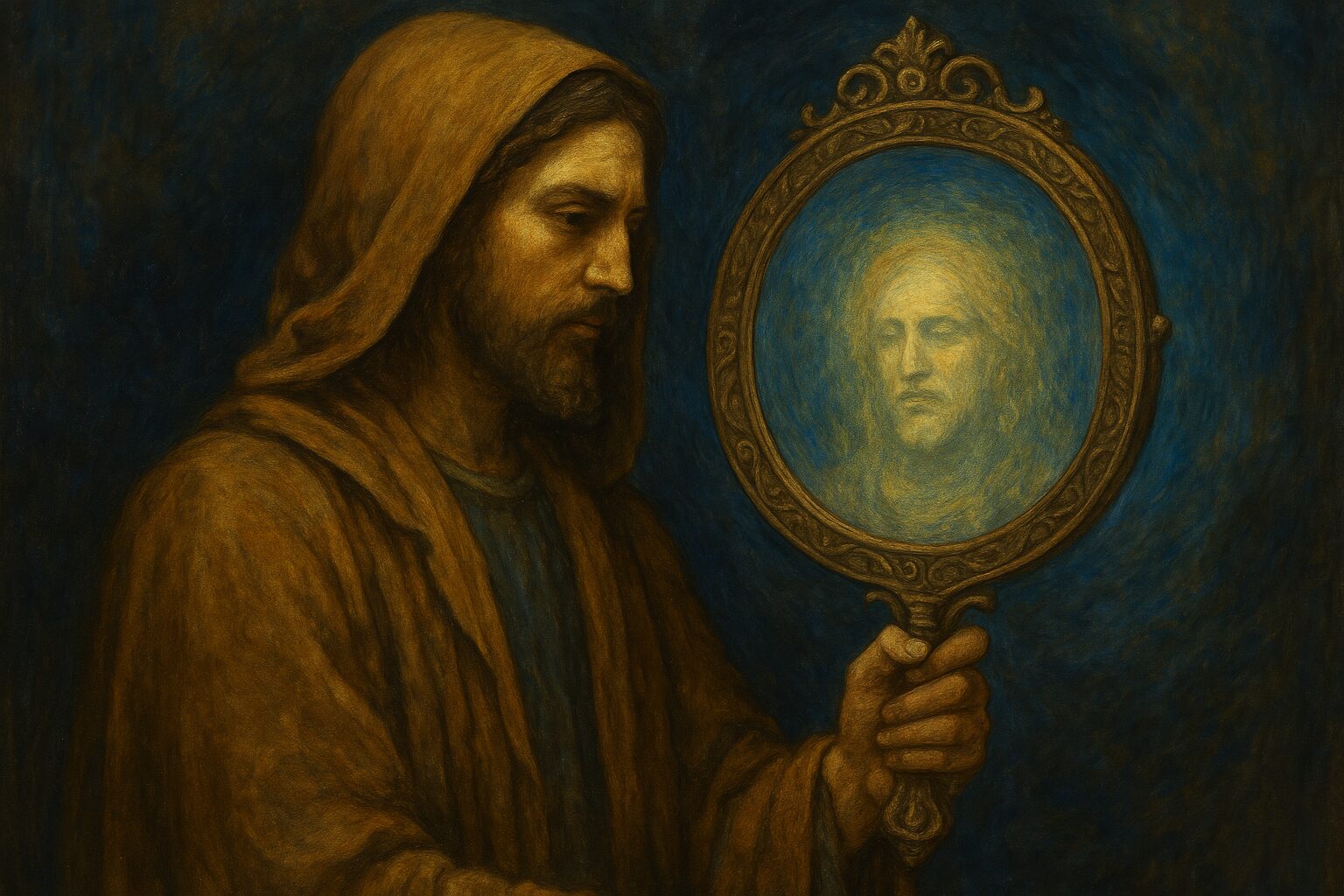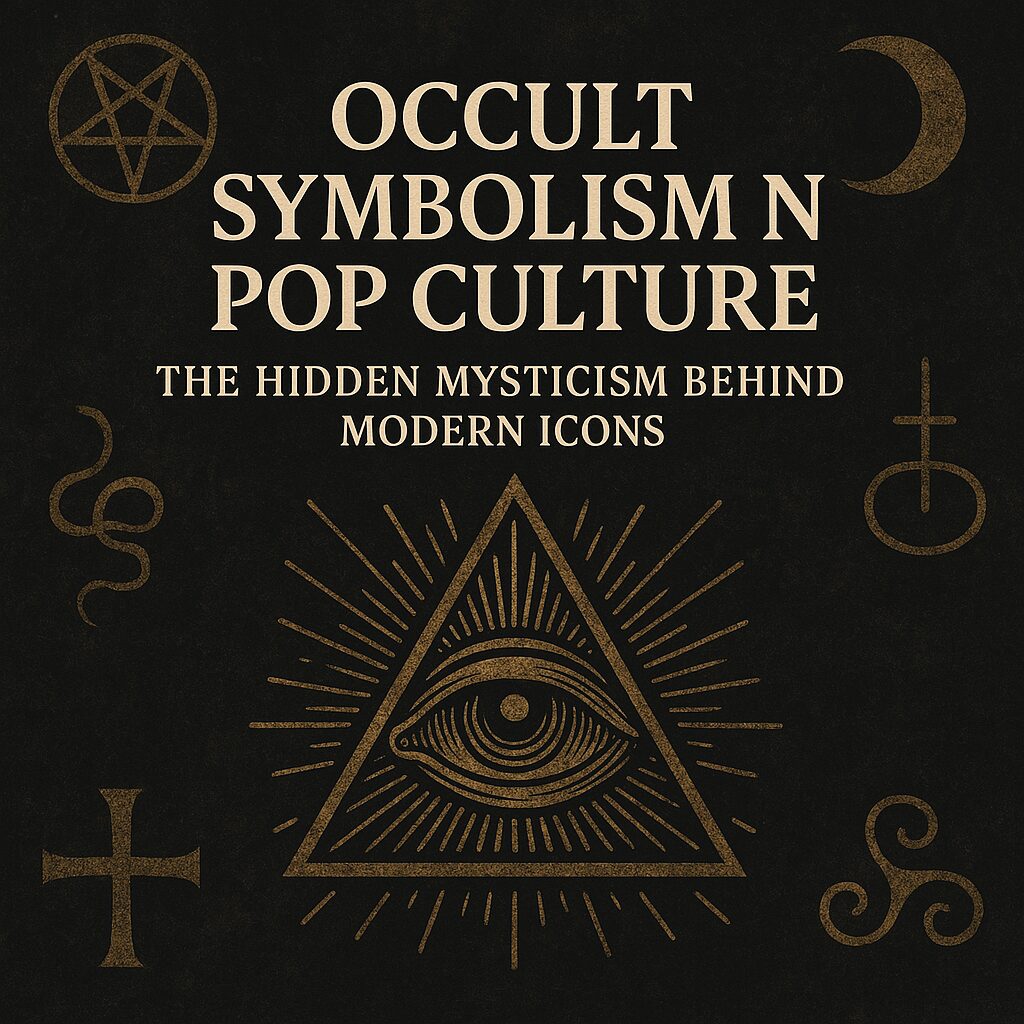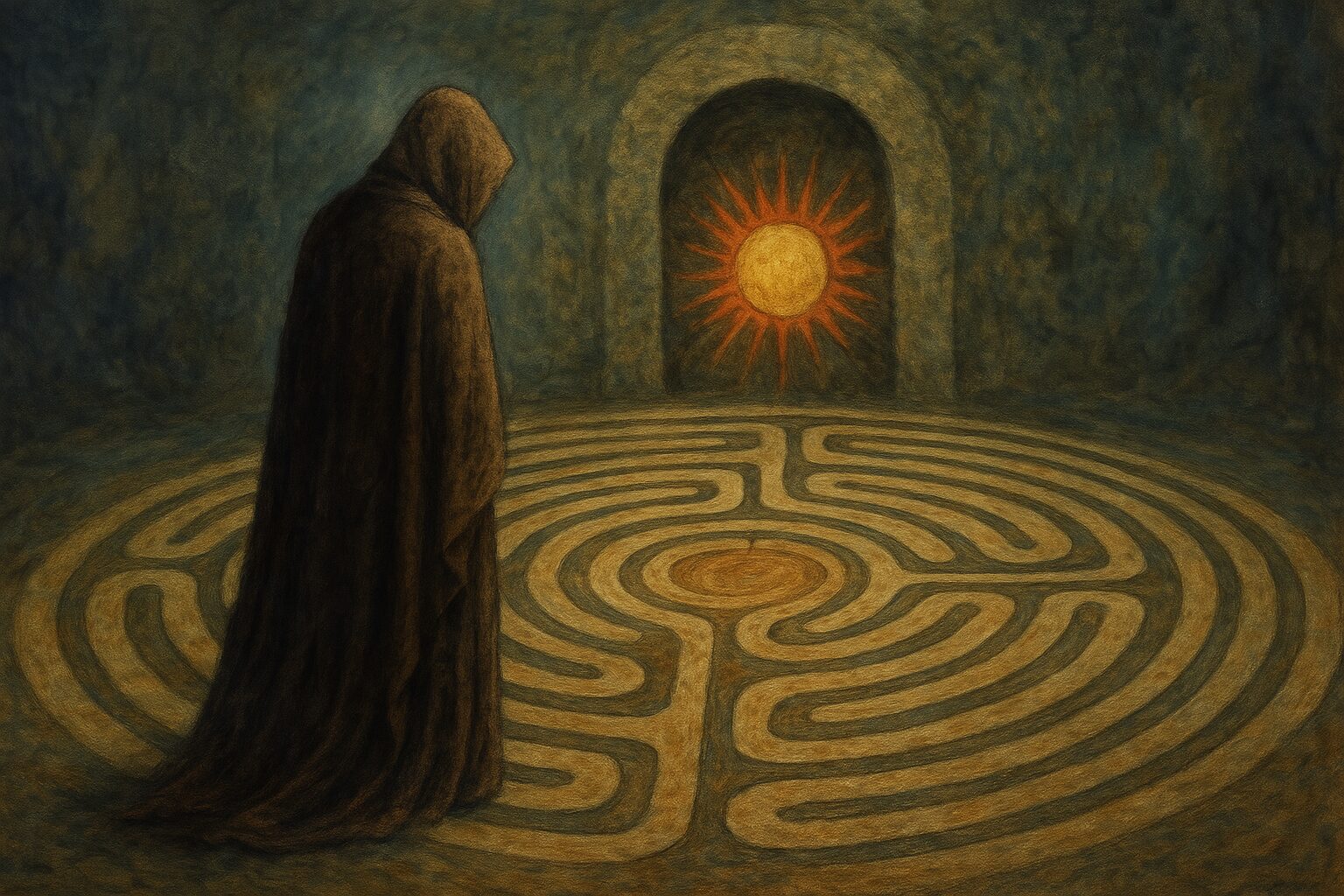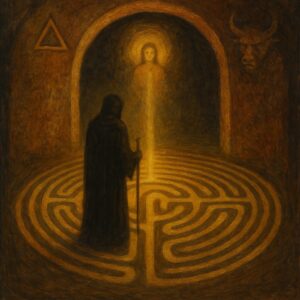“As above, so below; as within, so without.” — The Emerald Tablet
1. The Kybalion and the Principle of Mentalism
Hermetic wisdom begins with a bold claim: “The All is Mind.” In The Kybalion, this foundational axiom suggests that everything we perceive — from galaxies to inner thoughts — arises within the universal mind. Reality, then, is not a solid thing, but a fluid reflection. We are not separate from it. We are part of its dreaming.
In this view, consciousness is not in the world — the world is in consciousness.
This notion transforms everything. What we experience outside is never merely “out there.” It is also a mirror held up to what is “in here.” Each person, situation, and moment becomes a kind of mystical feedback loop.
2. The Mirror in Mysticism: From Sufis to Gnostics
The mirror has long been a central image in mystical traditions. In Sufi poetry, the heart is polished through love and suffering until it becomes a flawless mirror that reflects the Divine. Rumi wrote: “You are a mirror reflecting a noble face. The universe is not outside of you. Look inside yourself; everything that you want, you already are.”
In Gnostic cosmology, the soul descends into the world and forgets its origin. Reality becomes a hall of mirrors, fractured and distorted. Salvation comes not through dogma, but through gnosis — direct inner knowledge that awakens the soul to its true image.
Even in alchemical art, the mirror often appears as a tool of reflection and self-examination. The adept must gaze into it, not to see the world, but to see what they truly are beneath all disguises.
3. Illusion, Maya, and the Shifting Nature of Reality
Across traditions, reality is described as an illusion — maya in Hindu and Buddhist thought. Not unreal, but not ultimately real either. Like a mirror’s reflection, it is fleeting, shape-shifting, and dependent on perspective.
In this framework, our attachments, fears, and desires become projections — not solid truths, but images cast by the inner lantern of our mind. To mistake these for reality is to live in chains. To see through them is to become free.
And yet, this illusion is not meaningless. It is a sacred veil — a teaching tool, a theater of initiation.
4. Facing the True Self: Reflection and Shadow
To look into the mirror is not always comfortable. In the silence of self-reflection, we meet parts of ourselves we might wish to forget — the shadow, the wounded child, the persona we perform.
But the Hermetic path demands honesty. The mirror does not lie. It shows us as we are. And in that seeing, transformation becomes possible.
When we stop projecting blame outward and begin asking what is this showing me about myself?, the mirror becomes a portal. Each reflection becomes an opportunity for integration, humility, and growth.
5. Practical Contemplations: Gazing into the Inner Mirror
Here are a few inner practices to activate the mirror of Hermes in your life:
- Mirror Meditation: Sit before a mirror in candlelight. Gaze into your eyes. Let thoughts arise and pass. Watch what surfaces.
- Dream Journaling: Treat your dreams as mirrors of the unconscious. What are they revealing? What aspects of yourself appear as symbols?
- Projection Reversal: When judgment arises toward another, pause and ask: What is this reflecting in me?
- Heart Polishing: Daily acts of honesty, compassion, and humility polish the mirror of the heart, allowing it to reflect the Divine more clearly.
Conclusion:
The Mirror of Hermes is not an object — it is a metaphor for awakened consciousness. To walk the Hermetic path is to see the world, not as something “other,” but as a living mirror of the Divine Mind.
Every person you meet is a reflection. Every challenge is a teaching. Every joy is a glimpse of what already lives within you.
In the end, to know the world is to know the Self. And to know the Self is to know the All.




